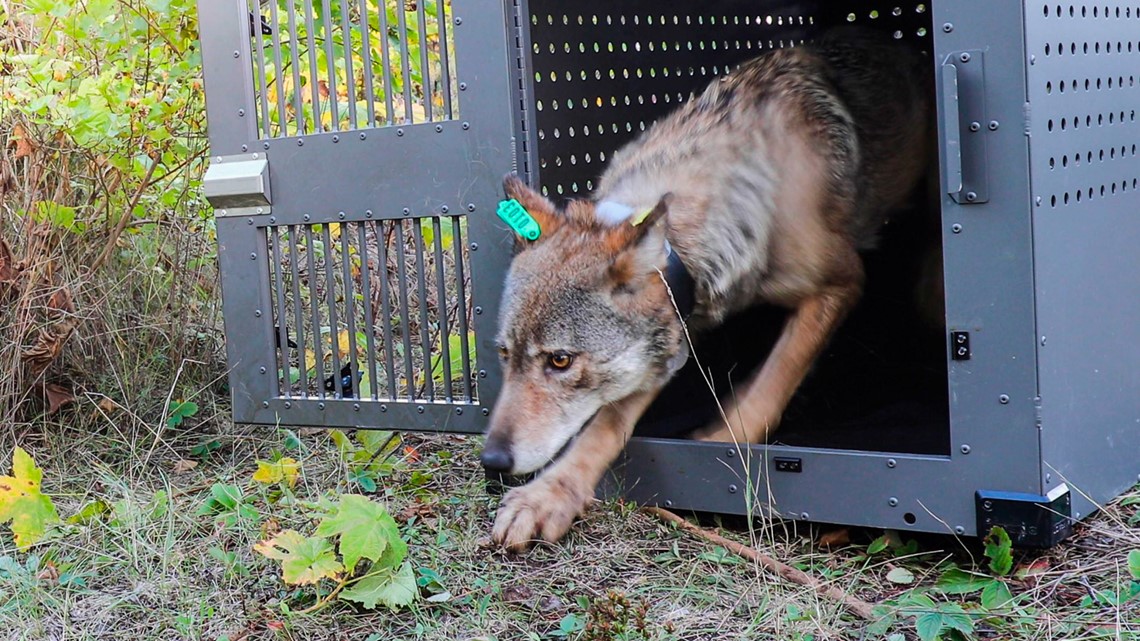TRAVERSE CITY, Mich. — Editors note: The video above originally aired on Feb. 26, 2021.
Scientists say wolf pups have been spotted again at Isle Royale National Park, and say that's a hopeful sign for efforts to rebuild a gray wolf population that had nearly died out.
Wildlife crews brought wolves from Minnesota, Michigan’s Upper Peninsula and the Canadian province of Ontario to the Lake Superior park several years ago. It's unknown how many are there now because the coronavirus pandemic forced cancelation of the annual winter census.
A new report from Michigan Tech researchers says remote cameras detected four pups on the park’s eastern end in January. The pup sightings, and additional clues such as previously observed scats and tracks, suggest two litters were born in the area last year and perhaps another on the western side.
With reproduction figures like that, research assistant professor Sara Hoy and her colleagues expect the wolf population to have grown slightly or moderately since the last survey count, so long as there hasn’t been an unusually high death rate.


Meanwhile, the park's overgrown moose population appears to be dropping, which could also be seen as a sign of wolf activity. "Wolves tackle prey, like moose, that are 10 times their own body size with their teeth, which are only two inches long," said Hoy.
“It’s a daunting task, as there is a risk that wolves will be seriously injured or even killed by their 900-pound prey. So, it’s no surprise that wolves tend to prey on moose calves that are smaller and a bit less savvy than adults or on older moose that are in poorer health,” she added.
The wolf population on Isle Royale was 12 to 14 during the last Michigan Tech survey in winter 2020. The latest births would indicate it is higher now, but some older wolves may have died in the last year.

